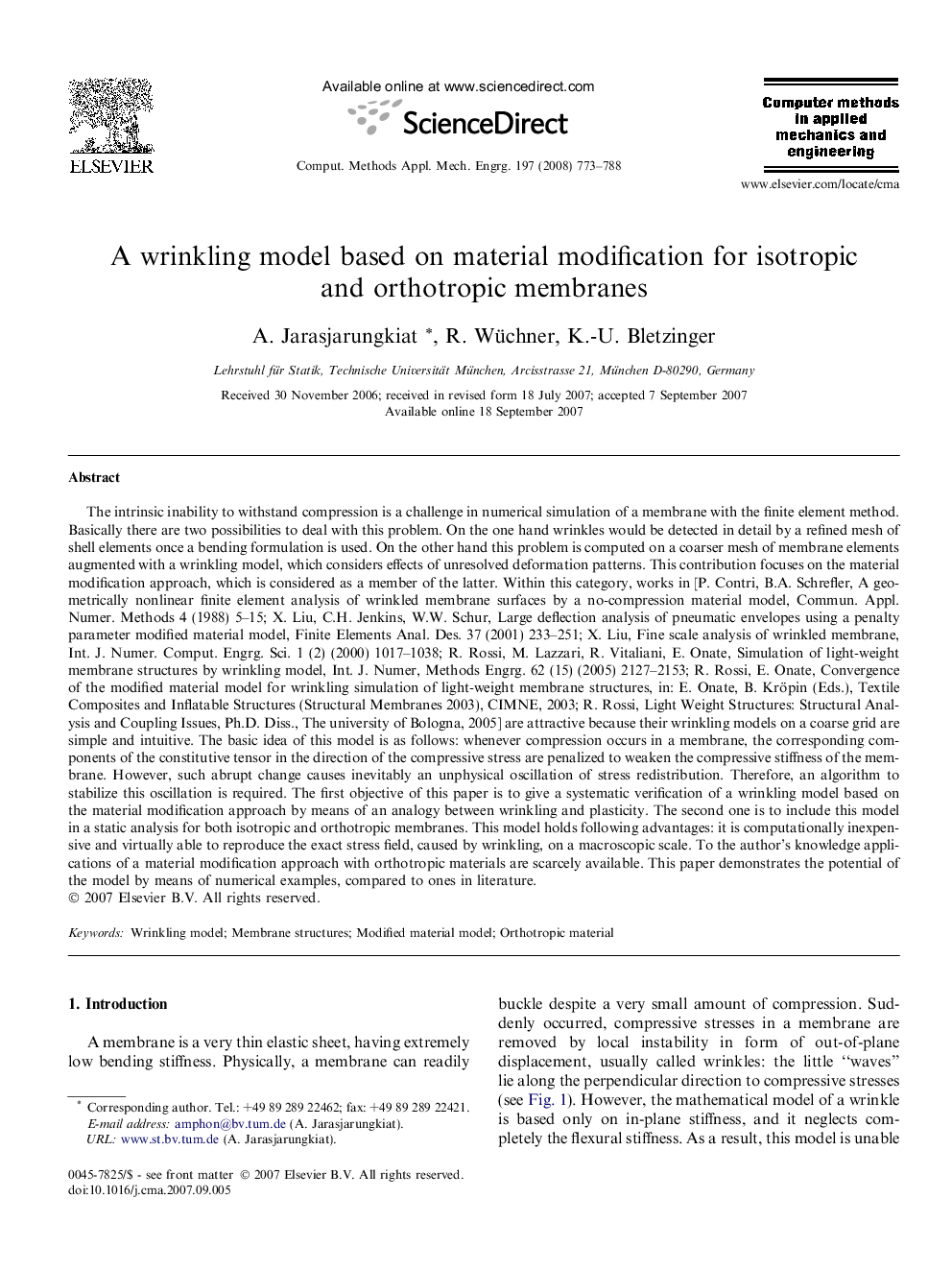| Article ID | Journal | Published Year | Pages | File Type |
|---|---|---|---|---|
| 499524 | Computer Methods in Applied Mechanics and Engineering | 2008 | 16 Pages |
The intrinsic inability to withstand compression is a challenge in numerical simulation of a membrane with the finite element method. Basically there are two possibilities to deal with this problem. On the one hand wrinkles would be detected in detail by a refined mesh of shell elements once a bending formulation is used. On the other hand this problem is computed on a coarser mesh of membrane elements augmented with a wrinkling model, which considers effects of unresolved deformation patterns. This contribution focuses on the material modification approach, which is considered as a member of the latter. Within this category, works in [P. Contri, B.A. Schrefler, A geometrically nonlinear finite element analysis of wrinkled membrane surfaces by a no-compression material model, Commun. Appl. Numer. Methods 4 (1988) 5–15; X. Liu, C.H. Jenkins, W.W. Schur, Large deflection analysis of pneumatic envelopes using a penalty parameter modified material model, Finite Elements Anal. Des. 37 (2001) 233–251; X. Liu, Fine scale analysis of wrinkled membrane, Int. J. Numer. Comput. Engrg. Sci. 1 (2) (2000) 1017–1038; R. Rossi, M. Lazzari, R. Vitaliani, E. Onate, Simulation of light-weight membrane structures by wrinkling model, Int. J. Numer, Methods Engrg. 62 (15) (2005) 2127–2153; R. Rossi, E. Onate, Convergence of the modified material model for wrinkling simulation of light-weight membrane structures, in: E. Onate, B. Kröpin (Eds.), Textile Composites and Inflatable Structures (Structural Membranes 2003), CIMNE, 2003; R. Rossi, Light Weight Structures: Structural Analysis and Coupling Issues, Ph.D. Diss., The university of Bologna, 2005] are attractive because their wrinkling models on a coarse grid are simple and intuitive. The basic idea of this model is as follows: whenever compression occurs in a membrane, the corresponding components of the constitutive tensor in the direction of the compressive stress are penalized to weaken the compressive stiffness of the membrane. However, such abrupt change causes inevitably an unphysical oscillation of stress redistribution. Therefore, an algorithm to stabilize this oscillation is required. The first objective of this paper is to give a systematic verification of a wrinkling model based on the material modification approach by means of an analogy between wrinkling and plasticity. The second one is to include this model in a static analysis for both isotropic and orthotropic membranes. This model holds following advantages: it is computationally inexpensive and virtually able to reproduce the exact stress field, caused by wrinkling, on a macroscopic scale. To the author’s knowledge applications of a material modification approach with orthotropic materials are scarcely available. This paper demonstrates the potential of the model by means of numerical examples, compared to ones in literature.
